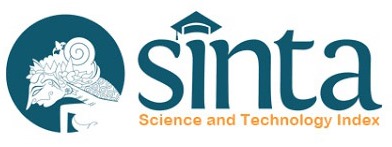Internal Transcribed Spacer (ITS) as Dna Barcoding to Identify Fungal Species: a Review
Abstract
Despite the fact that fungi are important sources of both bioactive compounds and mycotoxins, and that they are very ubiquitous in our environment, their species identification is hampered by incomplete and often unclear literature. Fungi identification is primarily based on their phenotypic and physiological characteristics. Nowadays, many molecular methods to identify fungal species have been developed. One of the methods considered as a new concept to rapidly and accurately identify unknown fungal sample is DNA Barcoding. This literature review will outline the use of DNA barcoding approach to rapidly identify fungal species and the use of ITS region that recently has been designated as primary DNA barcode for fungal kingdom. “DNA barcode” is a short, highly variable and standardized DNA region with approximately 700 nucleotides in length, which is used as a unique pattern to identify living things. Internal Transcribed Spacer (ITS) region of nuclear DNA (rDNA) has become the most sequenced region to identify fungal taxonomy at species level, and even within species. ITS region is a highly polymorphic non-coding region with enough taxonomic units. Therefore, it is able to separate sequences into species level. Even though ribosomal ITS as a universal barcode marker for fungi is still hampered by few limitations, the ITS will remain as the key choice for fungal identification. The search for alternative regions as DNA marker to improve fungal identification, especially in specific heredities, has already started.
Keywords
Full Text:
PDFDOI: https://doi.org/10.15578/squalen.213
Refbacks
- There are currently no refbacks.
ISSN : 2089-5690(print), E-ISSN : 2406-9272(online)
This work is licensed under a Creative Commons Attribution-NonCommercial-ShareAlike 4.0 International License.










